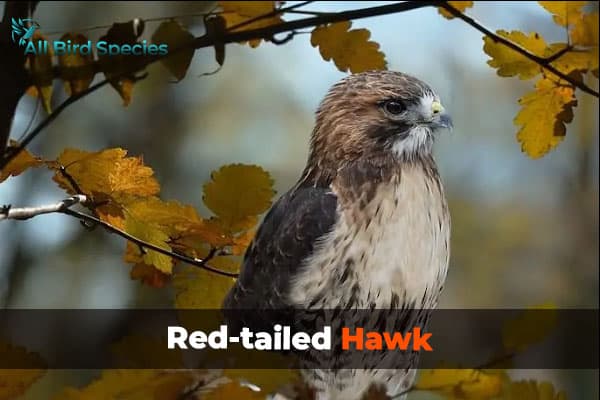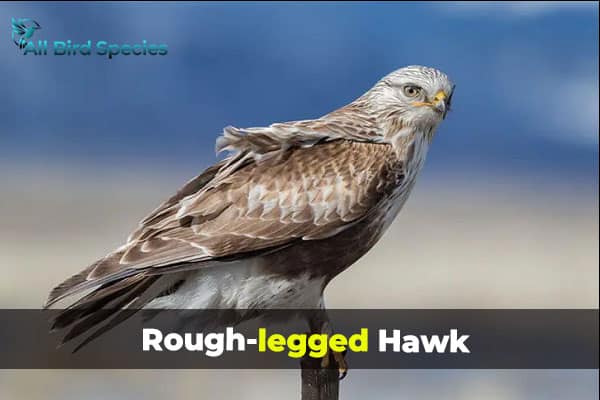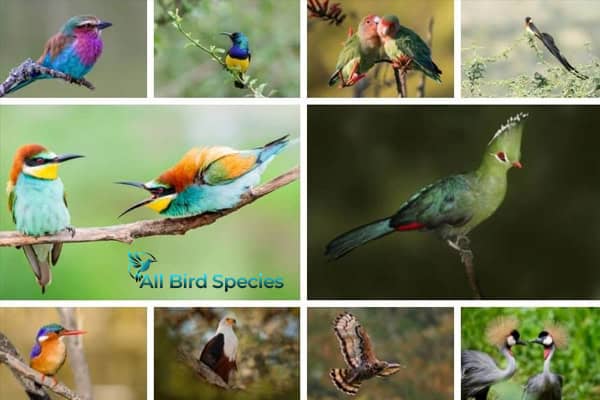7 Types of Hawks in Illinois (ID Guide With Pictures)
Did you know Illinois has eight different types of hawks all year? This makes it a great spot for birdwatching fans. Hawks are known for their sharp eyes and hunting skills. They can be seen flying over forests and fields.
Learning about Illinois’ hawks is fun and helps you spot them better, making watching these birds even more special.
In this guide, we’ll explore each hawk species. We’ll look at their special traits, where they live, and how they act. Whether you love birdwatching in Illinois or just want to learn about local birds, you’re in the right spot. Let’s explore the amazing world of hawks together!
Common Characteristics of Hawks
Hawks are birds of prey with amazing adaptations. They have sharp talons for catching prey and strong, hooked beaks for tearing flesh. Their exceptional vision helps them spot food from far away.
When looking at hawk identification tips, you’ll see they come in all sizes. The Sharp-Shinned Hawk is small, while the Red-Tailed Hawk is big. Their colours and patterns help them blend in, hiding from both prey and predators.
Hawks have different hunting ways, showing they are skilled hunters. They hunt everything from small mammals to big birds. This shows how adaptable and resourceful they are in their environment.
1. Red-Tailed Hawk
- Scientific Name: Buteo jamaicensis
- Size: 45–65 cm (18–26 in)
- Weight: 0.9–2.5 kg (2.0–5.5 lb)
- Lifespan: Up to 25 years
- Diet: Small mammals, birds, reptiles
The Red-Tailed Hawk, known as Buteo jamaicensis, is a famous bird in Illinois. It has a striking look and can live in many places. Learning about this bird means knowing its science, nesting, diet, and how it’s doing.

Scientific Classification and Identification
Red-tailed hawks are easy to spot because of their red tail and brown and white feathers. They are 19.7 to 25.6 inches long and have a wingspan of 44.9 to 52.4 inches, which helps birdwatchers tell them apart from other birds.
Nesting and Breeding Habits
Red-tailed hawks start nesting in late winter to early spring. You might see them showing off in the air during this time. Also, They build nests in tall trees to stay safe from predators. They come back to the same nest every year.
They are very dedicated to their territory. This helps their babies grow up and survive.
Diet and Hunting Techniques
Red-tailed hawks mostly eat small mammals like voles, rabbits, and rats. They sit high up to watch for prey. When they see something, they swoop down fast.
They are good at hiding in their surroundings. This helps them catch their food.
Conservation Status
Red-tailed hawks are not considered endangered. Their numbers are growing thanks to conservation work. But, they still face dangers like losing their homes and being shot illegally.
We need to keep working to protect their homes. This is important for keeping their numbers stable.
2. Red-shouldered Hawk
- Scientific Name: Buteo lineatus
- Size: 40–60 cm (16–24 in)
- Weight: 0.5–1.4 kg (1.1–3.1 lb)
- Lifespan: Up to 15 years
- Diet: Small mammals, amphibians, reptiles
The Red-Shouldered Hawk, known as Buteo lineatus, is a birdwatcher favourite. It measures 16.9 to 24.0 inches long and has a wingspan of 37.0 to 43.7 inches. Its reddish underparts and long, banded tail make it easy to spot.

Physical Description
These hawks have a striking appearance. Adults have reddish-brown underparts and pale chests. Their wings have dark bars. Juveniles are mottled with browns and whites, changing as they grow.
Nesting Preferences
Red-shouldered hawks nest in mixed deciduous forests near water in April, choosing large trees. They reuse their nests and are very loyal to their sites.
Feeding Habits
They eat small mammals, amphibians, and birds. They hunt from high branches, swooping down to catch prey. Their diet changes with the seasons.
Population Trends
Historically, habitat loss threatened their numbers. Conservation efforts have helped them recover. Banning certain pesticides has been key. Their numbers are now on the rise, thanks to these efforts.
3. Sharp-Shinned Hawk
- Scientific Name: Accipiter striatus
- Size: 28–38 cm (11–15 in)
- Weight: 70–200 g (2.5–7.1 oz)
- Lifespan: Up to 5 years
- Diet: Small birds, insects
The Sharp-Shinned Hawk, or Accipiter striatus, is the smallest hawk in Illinois. It’s easy to spot because of its size and colours: greyish feathers on its back, an orange breast, and unique tail markings.

They are between 9.4 to 13.4 inches long and have a wingspan of 16.9 to 22.1 inches. Their size and features make them interesting to watch.
Size and Appearance
Sharp-shinned hawks are small and sturdy. They have sharp features and fly fast. Their short tail and rounded wings help them move quickly.
Nesting Behavior
Sharp-shinned hawks build nests in dense forests. This keeps their young safe. During courtship, they show off in the air.
They build nests near tree trunks. This makes their homes secure for their young.
Hunting Strategy
Sharp-shinned hawks hunt small birds with skill. They sneak up and attack quickly. Their agility lets them catch birds in mid-air.
They can fly through plants to surprise their prey. This makes them very good hunters.
Conservation Efforts
Conservation efforts have helped Sharp-Shinned Hawks. Banning harmful pesticides has made a big difference. Despite threats, their numbers are improving during migration.
Seeing these hawks in the wild helps us understand their importance. It also reminds us of the need to keep protecting them.
4. Cooper’s Hawk
- Scientific Name: Accipiter cooperii
- Size: 38–56 cm (15–22 in)
- Weight: 250–700 g (0.55–1.54 lb)
- Lifespan: Up to 15 years
- Diet: Birds, small mammals
The Cooper’s Hawk in Naperville, Illinois, known as Accipiter Cooperii, has unique features that set it apart. It is 14.6 to 15.3 inches long and has a wingspan of 24.4 to 35.4 inches. Its upper body is blue-grey, with orange bars below.

Identification Features
To spot a Cooper’s Hawk, look for its long tail and special colours. Adults are slender, making them look agile. These traits make birdwatching more exciting.
Nesting Sites
Cooper’s Hawks build nests in tall trees, like those in gardens and parks. Their nests are made of sticks. They stay with their mates, returning to the same nest for years.
Dietary Choices
Cooper’s Hawks prey on small birds and mammals. They prefer doves and starlings. They hunt quietly from hidden spots, making them great hunters near bird feeders.
~Other Notable Hawks in Illinois~
Illinois is a great place for spotting hawks. The Northern Harrier, Rough-Legged Hawk, and Broad-Winged Hawk are especially interesting. Seeing these birds makes birdwatching even more fun, especially when rare hawks appear.
5. Northern Harrier
- Scientific Name: Circus cyaneus
- Size: 40–52 cm (16–20 in)
- Weight: 250–500 g (0.55–1.1 lb)
- Lifespan: Up to 10 years
- Diet: Small mammals, birds, reptiles
The Northern Harrier, or Circus hudsonius, is quite unique. Also, It has long wings and a tail, growing up to 18 inches long with a 43-inch wingspan. It hunts by gliding low over grasslands, looking for prey in the vegetation.

It also often nests on the ground in dense cover, making it a favourite among hawk watchers.
6. Rough-Legged Hawk
- Scientific Name: Buteo lagopus
- Size: 45–60 cm (18–24 in)
- Weight: 700–1,600 g (1.5–3.5 lb)
- Lifespan: Up to 20 years
- Diet: Small mammals, birds, carrion
Rough-legged hawks are easy to spot because of their dark and light feathers. They are 20 to 22 inches long and have long wings for soaring. They live in open fields and eat small mammals.

Their feathered legs are a key feature to look for when spotting them.
7. Broad-Winged Hawk
- Scientific Name: Buteo platypterus
- Size: 31–43 cm (12–17 in)
- Weight: 400–1,000 g (0.88–2.2 lb)
- Lifespan: Up to 14 years
- Diet: Small mammals, birds, reptiles
The Broad-Winged Hawk, or Buteo platypterus, is another fascinating bird in Illinois. It’s about 15 inches long with dark brown feathers and broad wings. It nests in wooded areas and eats small birds and rodents.

Knowing how to identify it can deepen your appreciation for this bird.
Rare Hawks in Illinois
Illinois also has some rare hawks that are less common. These include migratory birds that birdwatchers love to see. Spotting these hawks adds a thrilling challenge to birdwatching in the area.
Observing Hawks in Illinois
Illinois is a great place for hawk-watching. Birdwatchers love open spaces, woodlands, and areas near water. Knowing where to see hawks makes your experience better. Parks and nature reserves are perfect for watching these birds in their home.
- Look for tall trees or utility poles where hawks like to perch.
- Use binoculars to see hawks up close without scaring them away.
- Learn to recognize different calls and behaviours to identify hawks.
- Visit during migration seasons for more chances to see hawks.
Many bird lovers join local programs and tours. These can teach you about hawks and their homes. Talking to experienced birdwatchers can improve your skills and make your hawk-watching in Illinois better. Remember, being patient lets you see the beauty and behaviour of hawks.
| Location | Best Time to Visit | Target Hawk Species |
|---|---|---|
| Starved Rock State Park | Fall Migration | Red-tailed Hawk |
| Rock Cut State Park | Year-Round | Sharp-shinned Hawk |
| Moraine Hills State Park | Spring Migration | Cooper’s Hawk |
| Shawnee National Forest | Winter | Rough-legged Hawk |
Importance of Hawks in the Ecosystem
Hawks are key ecosystem players, top predators that keep the environment balanced. By controlling small mammals and birds, hawks prevent overpopulation, which could harm local ecosystems.
Hawks do more than just control populations. They are signs of a healthy environment. A strong hawk population means a diverse ecosystem, supporting many species like birds, insects, and plants.
Learning about hawks and their prey shows their value. Hawks hunt weak or sick animals, helping the health of their prey. This natural selection keeps the food web balanced.
In short, hawks are crucial to the ecosystem. Their hunting and influence on species diversity improve ecological health. Seeing many hawks is a good sign, showing the ecosystem is doing well.
| Function | Impact |
|---|---|
| Population Control | Prevents overpopulation of small mammals and birds |
| Health Monitoring | Targets weak or diseased individuals |
| Biodiversity Indicator | Signals a thriving, diverse ecosystem |
| Food Web Support | Maintains balance within predator-prey dynamics |
Read More🐦Related Articles:
| Owls in Arkansas |
| Hummingbirds in Florida |
| Birds That Lay Blue Eggs |
| Birds With Orange Heads |
| White Birds in Florida with Long Beaks |
Final Word
Hawks in Illinois show a wide range of species, each with unique traits and behaviours. Exploring these hawks, from the Red-Tailed Hawk to the Northern Harrier, deepens our understanding of their roles in nature. This knowledge helps us appreciate the world around us more.
Observing hawks is more than just watching birds. It’s also about protecting their homes. This shows how hawks and the environment are connected. It encourages us to help keep Illinois’s diverse wildlife safe.
Learning about hawk species and their importance in nature is key. It helps us protect Illinois’s natural beauty for the future, ensuring that others can enjoy these amazing birds just as we do.






